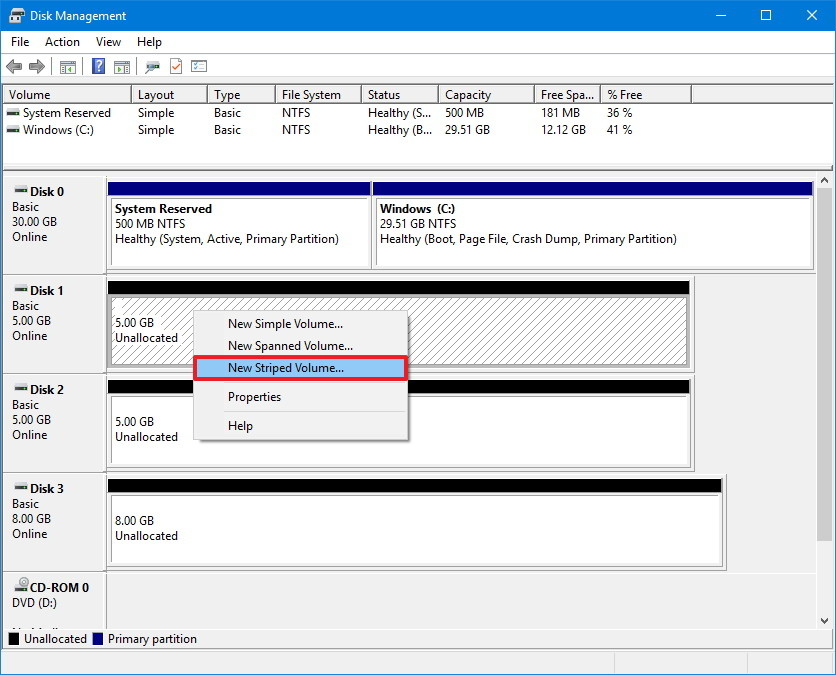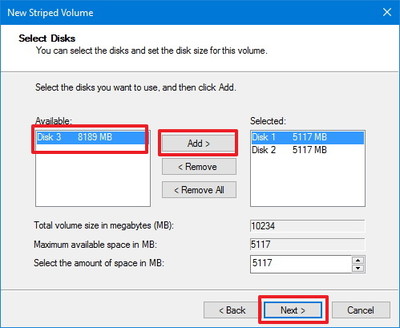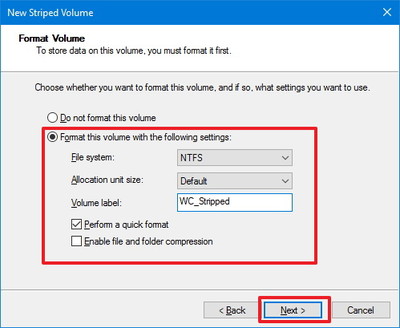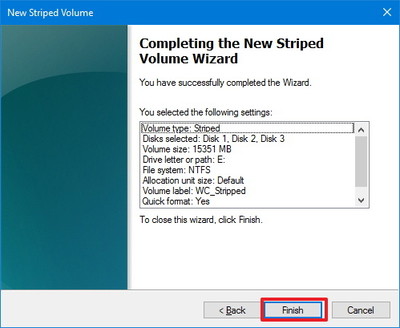How to combine multiple hard drives into a Volume on Windows 10
When you have multiple hard drives on your computer, managing data files, as well as locating files is extremely difficult. However, like previous versions, Windows 10 also has additional features that you can activate to combine all the drivers on your computer into a Volume.
Two features are Spanned Volume and Striped Volumes. Both of these features have the same function, the only difference between these two features is how to write data on the hard drive.
If using Spanned Volume, you can combine 2 or more different sized hard drives to create a large volume. On Spanned, the drives are sorted and used in order, meaning that after writing the data on the first drive, write data to the second drive.
Conversely, if using Stripped you can combine 2 or more hard drives to form a large Volume. However, if you want to use all available space, you must use hard drives of the same size. On Stripped, data is recorded on all participating drives, higher performance than Spanned.

Combine multiple hard drives into one large Volume:
It is important to note that all your content will be deleted when you join Spanned Volume or Striped Volume, so backup your data before proceeding.
1. Press Windows + X key combination to open the Power User Menu. Here you click Disk Management .
2. Right-click the Volume and select Delete volume .

3. Click Yes to confirm the delete of the current volume and all data in the volume.
4. Do the same steps 2 and 3 on the hard drive you want to combine.
5. Right-click any space on the drive and select New Striped Volume (or New Spanned Volume).
6. Click Next .

7. Select the drive you want to add, select each drive, then click Add .
8. Click Next .

9. Leave the default drive, then click Next.
10. Make sure the File System section is set to NTFS format, the Allocation unit size item set to Default and select a Volume label.
11. Check the option Perform a quick format .
12. Click Next .

13. Click Finish .

14. At this point on the screen you will be asked to convert the hard drive from Basic to Dynamic, click Yes to complete the process.

Refer to some of the following articles:
- How to split MS-DOS hard drive (FDISK)?
- Instructions on how to create a RAM drive on Windows
- How to recover lost files after repartitioning the hard drive?
Good luck!
You should read it
- Instructions for dividing hard drives right in Windows 10
- 7 best external hard drives
- Learn about HDD hard drive
- 5 hard drives with the best reliability
- What is a hard drive? There are several types?
- How to increase the life and durability of hard drives
- Instructions to divide and merge drives right in Windows 7
- 10 things to do when using SSD hard drives on Windows
May be interested
- 7 best external hard drives
 you have used up your computer or phone memory and need a device to store photos, music and files. depending on your personal needs, there are several types of external hard drives that you can choose from. this article will introduce you to the 7 best external hard drives in 2017.
you have used up your computer or phone memory and need a device to store photos, music and files. depending on your personal needs, there are several types of external hard drives that you can choose from. this article will introduce you to the 7 best external hard drives in 2017. - 8 other uses of external hard drives/NAS besides file storage
 external hard drives and nas drives are useful devices for storing files. in fact, they're so useful that it's not uncommon for people to buy more than they really need.
external hard drives and nas drives are useful devices for storing files. in fact, they're so useful that it's not uncommon for people to buy more than they really need. - 10 things to do when using SSD hard drives on Windows
 in the future, it can be assumed that tech-savvy windows 10 users will make the switch from sata hard drives to ssds by buying a new computer or upgrading themselves.
in the future, it can be assumed that tech-savvy windows 10 users will make the switch from sata hard drives to ssds by buying a new computer or upgrading themselves. - Instructions to divide and merge drives right in Windows 7
 if in windows xp, when you want to split or merge disk partitions on a hard drive, we can't directly manipulate windows but need to use external software (pq magic, arconis, paragon ...). as for windows 7, this is easy because that feature has been improved ...
if in windows xp, when you want to split or merge disk partitions on a hard drive, we can't directly manipulate windows but need to use external software (pq magic, arconis, paragon ...). as for windows 7, this is easy because that feature has been improved ... - Experience gold when choosing to buy an external hard drive
 external hard drive (hdd) has become an indispensable component for office users. however, many people still do not know how to buy them.
external hard drive (hdd) has become an indispensable component for office users. however, many people still do not know how to buy them. - Differences between SSD and HDD hard drives
 hdd and ssd drives are the two most popular storage devices today. in particular, hdd (hard-disk-drive) is traditional and ssd (solid-state-drive) is a new type of hard drive in solid form. basically both of these hard drives are used to store data, so many users often confuse ssd and hdd hard drives no difference.
hdd and ssd drives are the two most popular storage devices today. in particular, hdd (hard-disk-drive) is traditional and ssd (solid-state-drive) is a new type of hard drive in solid form. basically both of these hard drives are used to store data, so many users often confuse ssd and hdd hard drives no difference. - What is a NAS hard drive? What is a Surveillance Hard Drive?
 capacity is not the only thing that distinguishes one hard drive from another. there are many types of hard drives on the market. in today's article, tipsmake.com will help readers distinguish between 2 types of hard drives. that is nas drive and surveillance drive.
capacity is not the only thing that distinguishes one hard drive from another. there are many types of hard drives on the market. in today's article, tipsmake.com will help readers distinguish between 2 types of hard drives. that is nas drive and surveillance drive. - 7 ways to fix low volume in Windows 10
 poor sound quality can ruin the whole experience. a common mistake that often gets in the way of evening entertainment is the low volume problem with windows 10.
poor sound quality can ruin the whole experience. a common mistake that often gets in the way of evening entertainment is the low volume problem with windows 10. - The best mobile hard drives in the world
 pocket-sized portable hard drives are the best devices for backing up or storing users' large media files. here are the 10 best portable hard drives in the world.
pocket-sized portable hard drives are the best devices for backing up or storing users' large media files. here are the 10 best portable hard drives in the world. - What is the 'System Volume Information' folder, and can this folder be deleted?
 on windows drives, even external usb drives, you will see a folder called system volume information. and you will only see this folder if you set hidden files and folders on the system only. so what is the 'system volume information' folder, and can this folder be deleted?
on windows drives, even external usb drives, you will see a folder called system volume information. and you will only see this folder if you set hidden files and folders on the system only. so what is the 'system volume information' folder, and can this folder be deleted?










 Instructions for fixing errors do not install VMware Tools
Instructions for fixing errors do not install VMware Tools How to turn off Secure Boot mode and open Boot Legacy mode
How to turn off Secure Boot mode and open Boot Legacy mode How to open folders hidden on the system with the Shell command on Windows?
How to open folders hidden on the system with the Shell command on Windows? Instructions to reset a program on Windows to the default installation state
Instructions to reset a program on Windows to the default installation state